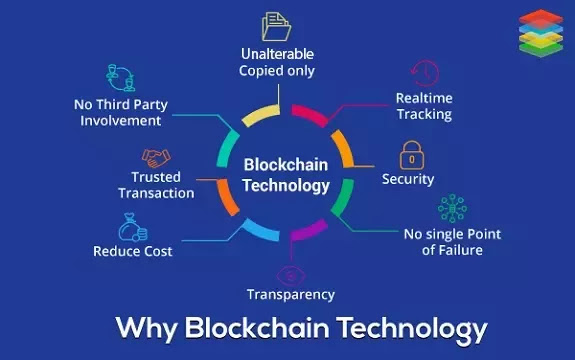BLOCKCHAIN
(Secured transaction)
What is a Blockchain?
Blockchain is a distributed and decentralized digital ledger which records transactions across a global network of computers where the information is highly secure.
We can also think of it as a chain or records stored in the forms of blocks which are controlled by no single authority. A blockchain is a distributed ledger that is completely open to any and everyone on the network. Once an information is stored on a blockchain, it is extremely difficult to change or alter it.How Does a Blockchain Work?
A blockchain is a chain of
blocks that contain data or information.
Each block in a blockchain network stores some
information along with the hash of its previous block. A hash is a unique mathematical code which belongs to a specific block. If the information inside the block is modified, the hash of the block will be subject to modification too. The connection of blocks through unique hash keys is what makes blockchain secure.
While transactions take place on a blockchain, there are nodes on the network that validate these transactions. In order for a transaction to be valid, each block must refer to the hash of its preceding block. The transaction will take place only and only if the hash is correct. If a hacker tries to attack the network and change information of any specific block, the hash attached to the block will also get modified.
The breach will be detected as the modified hash will not match with the original one. This ensures that the blockchain is unalterable as if any change which is made to the chain of blocks will be reflected throughout the entire network and will be detected easily.
Each transaction on a blockchain is secured with a digital signature that proves its authenticity. Due to the use of encryption and digital signatures, the data stored on the blockchain is tamper-proof and cannot be changed.
All the data stored on a blockchain is recorded digitally and has a common history which is available for all the network participants. This way, the chances of any fraudulent activity or duplication of transactions is eliminated without the need of a third-party.
Why we go for Blockchain technology?
In order to understand blockchain better, consider an example where you are looking for an option to send some money to your friend who lives in a different location. A general option that you can normally use can be a bank or via a payment transfer application like PayPal or Paytm. This option involves third parties in order to process the transaction due to which an extra amount of your money is deducted as transferring fee. Moreover, in cases like these, you cannot ensure the security of your money as it is highly possible that a hacker might disrupt the network and steal your money. In both the cases, it is the customer who suffers. This is where Blockchain comes in.
Instead of using a bank for transferring money, if we use a blockchain in such cases, the process becomes much easier and secure. There is no extra fee involved as the funds are directly processed by you thus, eliminating the need for a third party. Moreover, the blockchain database is decentralised and all the information and records kept on the blockchain are public and decentralized. Since the information is not stored in a single place, there’s no chance of corruption of the information by any hacker.
Real-World Uses for Blockchain Technology
- Payment processing and money transfers
- Digital voting
- Data sharing
- Copyright and royalty protection
- Real estate, land, and auto title transfers
- Managing Internet of Things networks
- Weapons tracking
- Medical record keeping.
State Bank of India has taken the lead in bringing lenders and tech companies together for using blockchain technology to share information among banks which will eventually help prevent frauds.
BLOCKCHAIN EXPLANATION IN TAMIL




Comments
Post a Comment